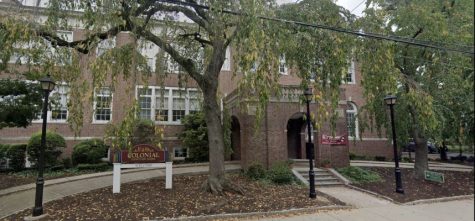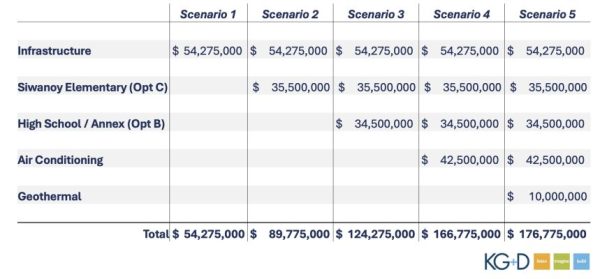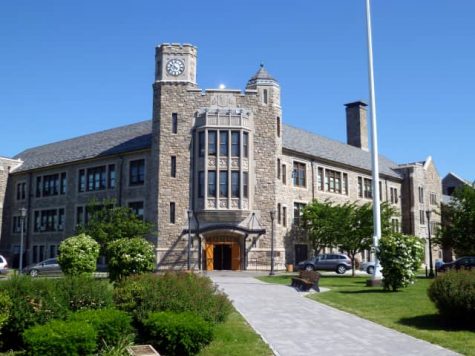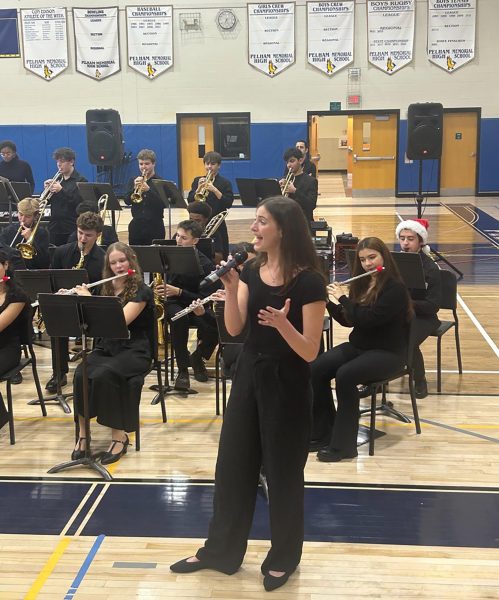Building Bridges program expanded lessons on disabilities to most Pelham elementary schools in early March
Disability education program Building Bridges expanded from Colonial School to two other Pelham elementary schools in early March.
The program, which teaches students to be understanding of those with differences, held classes at Colonial, Prospect Hill and Siwanoy, after running in Colonial last year. Hutchinson School was supposed to host its Building Bridges lessons in mid-April.
Building Bridges is meant to celebrate and help students connect with the disabled. Students at Colonial learned about physically and mentally disabled/challenged people with visitors and speakers who had different abilities.
“The purpose of Building Bridges is to offer students an increased understanding of people with different abilities—whether physical or developmental—through education,” said Lisa Horten, who is the Colonial Building Bridges communications director. “When we better understand each other’s differences—and similarities, too!—we’re more likely to be open, empathetic and compassionate towards each other.”
“The program is taught to each grade through two distinct parts—interactive classroom workshops and speakers who have personal experience living with each type of disability,” said Horten. “We’re thrilled with this year’s expansion. Last year, a group of parent volunteers were responsible for bringing Building Bridges to Colonial. It was already in place in Mamaroneck and Tuckahoe schools.”
“The feedback from students and their teachers has been fantastic,” she said. “We hope to build on what our students are learning year over year, increasing not just their understanding of the specific disabilities, but their overall understanding and empathy towards all kinds of people. We’re all unique, and that should be celebrated.”
On March 3, the first grade classes and Catherine Rodriguez’s K-3 class had a lesson with three parents who facilitated Building Bridges that day, Kerry Buckley, C.C. Jaio and Sylvia Wong. They started out by asking the students what made them different, and the most commonly thought of answers were called out, such as “different hair colors,” “some of us have glasses and others don’t,” but the one that rang out above all others was the answer, “we all face different challenges.”
These particular students learned about visually impaired people. They watched a video about Brad Snyder, who stepped on a mine in Afghanistan and was permanently blinded. The rest of his body recovered, and he won a gold medal in swimming at the 2012 London Olympics, and miraculously learned to do everything a normal person would be able to do. Tears welled up in the kids’ eyes as they heard his story. The students also got a chance to meet Snyder when he gave a speech on March 6.
After the video, the Colonial students got involved in a series of interactive classroom activities to simulate how blind people function and live. In the first group, one person wore a blindfold, and the other gave them directions to help them walk around the classroom. In the second group, they also wore blindfolds and felt objects and tried to identify what they were. The third group learned to read the braille alphabet, in which letters are made up of a series of textured bumps so the visually impaired are able to read.
According to Buckley, “Building Bridges is meant to teach students that even though we all have differences and face challenges, we’re all people and should be treated like them.”
“All people are fundamentally the same, and we must understand that, and provide help if somebody wants it, and we should respect their wishes if they want to be independent,” said Jaio.
The other grades of Colonial School were taught individual lessons about different disabilities. Second grade learned about hearing impairment, third grade about autism, fourth grade the challenges people with physical differences face and fifth grade dyslexia.
Evan Kaplan is a seventh grader at Pelham Middle school. He has many academic interests and aspirations, including being a staff reporter for the Pelham...








